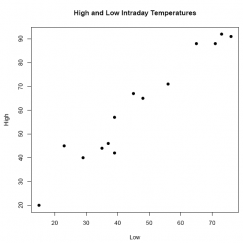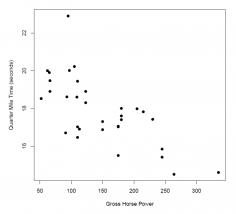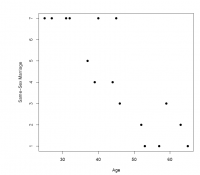Chapter 12: Simple Linear Regression
1. This exercise provides further opportunity to find a set of data from an online source (such as www.infoplease.com), create a data frame from scratch (see the Chapter 1 Appendix, if necessary), and analyze it using some of the methods associated with simple linear regression. Look up and record the high and low intraday temperatures (either in degrees Celsius or Fahrenheit) for the following 14 cities from around the world: Auckland, Beijing, Cairo, Lagos, London, Mexico City, Mumbai, Paris, Rio de Janeiro, Sydney, Tokyo, Toronto, Vancouver, and Zurich. This information is easily found after brief search.
2. A dependent variable y is regressed on an independent variable x; the sample size is n = 32.
3. This exercise uses the mtcars data set that is installed in R. (Remember that to see all the installed data sets, simply enter data() at the R prompt in the Console; to view the mtcars data set itself, enter mtcars at the R prompt; to learn more about the data set, including the variables and observations, enter ?mtcars at the prompt and wait for the R Help page to open.) In this case, we are interested in the relationship between an automobile's quarter-mile time and gross horsepower.
4. Use the mtcars data set to answer the following questions.
5. This exercise explores the relationship (if any) between two of the five variables comprising the data set polling: x1 =age, measured in years, and x3 =same sex, which is measured on a 1-to-7 Likert scale as a response to the statement, "I approve of the right of same-sex couples to marry." A respondent registers strong disapproval with a 1, strong approval with a 7, and relative indi erence with a response in the middle of the range from 1 to 7. (Note: polling can be found on the book's website.)




